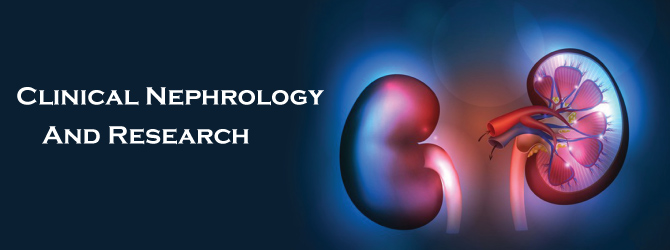
Sign up for email alert when new content gets added: Sign up
Introduction: Sodium is the major determinant of extracellular volume and tonicity of plasma. Derangements in its serum concentration are common and could be dependent on factors like intake, age, hydration status and kidney function. Due to its contribution to the extracellular volume, derangement could produce widespread clinical manifestations.
Methods: A single centre, observational study in which variables of hypertensive and non-dialyzed Chronic Kidney Disease (CKD) patients were compared. Serum electrolytes, urea, creatinine, hematocrit, albumin and urine dip strip protein were assessed. Predictors of hyponatremia were determined.
Results: One hundred and forty one hypertensives and 67 CKD cohorts were studied. The mean age of the hypertensive and CKD cohorts were 52.91 ± 15.73 years and 58.14 ± 16.13 years respectively. Overweight/Obesity, systolic, and diastolic hypertension were more likely to be found in CKD than hypertension, P=0.05, P=0.05 and P=0.07 respectively. The mean serum sodium of hypertensives and CKD cohorts were 136.94 ± 5.23mmol/L and 132.81 ± 8.45mmol/L, P<0.001. Normonatremia and, hyponatremia was commoner among the hypertensives and CKD cohorts (88.14% versus 11.91%) and (78.13% versus 21.87%) respectively. The mean serum sodium was positively related to blood pressure (P=0.02), eGFR (P<0.001), hematocrit (P=0.002) and serum albumin, P<0.001, but was inversely related to the age (P=0.003), potassium (P=0.01) and anion gap (P=0.003). The mean eGFR was statistically lower in CKD than hypertension, P=0.001. Advancing age (OR- 1.95, 95% CI-0.94-2.16), CKD (OR-4.13, 95% CI-3.47-8.36), comorbidities (OR-3.16, 95% CI-2.89-6.46), independently predicted hyponatremia.
Conclusion: The serum sodium concentration was lower in CKD than in hypertension, and was positively related to blood pressure, hematocrit and serum albumin while it was negatively related to age, kidney function and anion gap. Sodium, being the major determinant of the extracellular fluid volume and plasma tonicity, It is imperative to keep its concentration within normal to avert the many adverse consequences of its derangement.